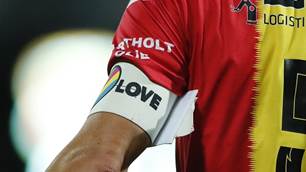FIFA will attempt to crack down on 'age cheats' at the Under-17 World Cup which kicks off in Nigeria this weekend by carrying out random tests.
Medical officers will carry out MRI scans of players' wrists and by measuring the fusion of bones will be able to determine whether they are actually under 17.
The Nigeria Football Federation initially claimed the tests were not reliable but FIFA have said they are determined to push ahead.
The hosts have since dropped 15 players from their under-17 squad after they failed age tests.
Professor Jiri Dvorak, head of FIFA's medical assessment and research centre, said: "MRI of the wrist is a simple, reliable, valid and non-invasive method of age determination in young male football players.
"We can identify overage players at under-17 competitions at no risk to the individual. This is of considerable help both to member associations and FIFA."
FIFA began taking scans of young players' wrists back in 2003 but it is only now that they have been able to judge age with 99% certainty.
The results from the Under-17 World Cups in 2003, 2005 and 2007, analysed retrospectively, showed up to 35% of players were overage.
FIFA accept that in some countries establishing proof of age is difficult because birth certificates are often not available.
A statement on FIFA's website said: "In the past, overage players have been wrongly entered into various youth competitions, often benefiting from an unfair advantage due to their greater physical maturity compared to players of the proper age.
"Until now, the main way of checking a player's age was to look at the date of birth stated in his or her passport - but this does not always solve the issue."
The Nigeria Football Federation initially claimed the tests were not reliable but FIFA have said they are determined to push ahead.
The hosts have since dropped 15 players from their under-17 squad after they failed age tests.
Professor Jiri Dvorak, head of FIFA's medical assessment and research centre, said: "MRI of the wrist is a simple, reliable, valid and non-invasive method of age determination in young male football players.
"We can identify overage players at under-17 competitions at no risk to the individual. This is of considerable help both to member associations and FIFA."
FIFA began taking scans of young players' wrists back in 2003 but it is only now that they have been able to judge age with 99% certainty.
The results from the Under-17 World Cups in 2003, 2005 and 2007, analysed retrospectively, showed up to 35% of players were overage.
FIFA accept that in some countries establishing proof of age is difficult because birth certificates are often not available.
A statement on FIFA's website said: "In the past, overage players have been wrongly entered into various youth competitions, often benefiting from an unfair advantage due to their greater physical maturity compared to players of the proper age.
"Until now, the main way of checking a player's age was to look at the date of birth stated in his or her passport - but this does not always solve the issue."
Copyright (c) Press Association
Related Articles

Morocco blazing a trail for Arab women's football participation

FIFA blasted for OneLove armband threat













